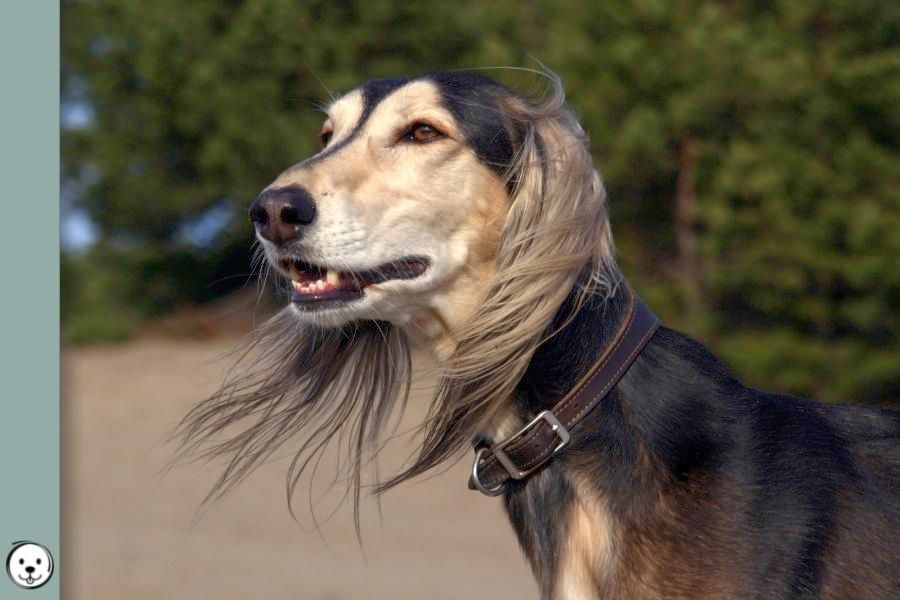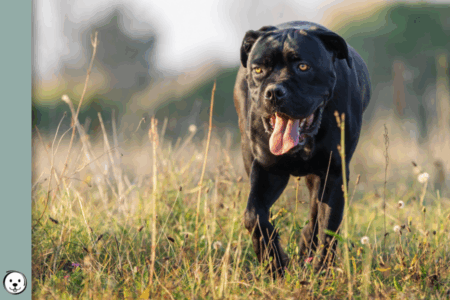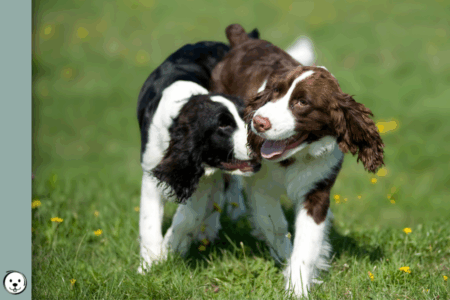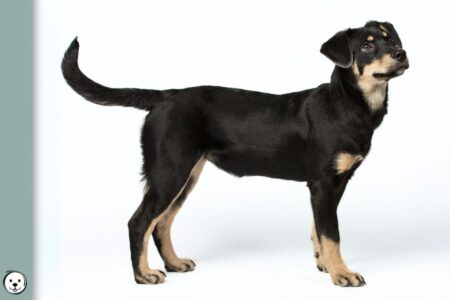The eG allele at the E-Locus modifies any coat color pattern by reducing eumelanin and increasing phaeomelanin. This causes different new phenotypes mainly found in sighthound breeds.
What is Domino or Grizzle in Sighthounds?
Domino changes any base pattern by decreasing eumelanin expression.

The resulting phenotypes go by various breed-specific names like grizzle, domino, chinchilla, etc…
In Salukis, some phenotypes are called grizzle. And in Afghan Hounds, the very common tan point domino pattern was named after a famous show dog of the 1950s named Tanjores Domino.
The grizzle domino allele affects any pattern caused by a dog’s K locus and A locus. The variant eG is considered one of the rarest trait-associated variants in dogs[1,2].
It basically changes almost all traditional patterns to a lighter version with reduced black. But the resulting phenotypes vary greatly depending on what pattern a dog would normally have had.
Similar to Northern domino, grizzle also reduces dark shading and dark hair banding in any given pattern. It turns all areas pigmented by eumelanin smaller and causes pale undercoat, pale whiskers, and pale hair roots. Any tan areas typically fade to a lighter color and get bigger than expected.
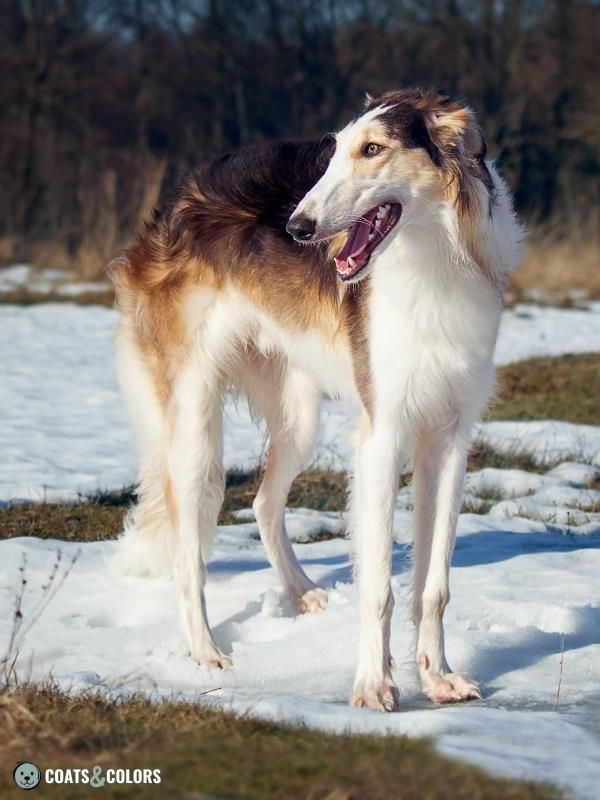
Dominant black (KB/- eG/-) dogs turn grayish or express some of their masked agouti locus pattern. Brindle striping (kbr/- eG/-) fades to gray or is removed from the extremities. And any other pattern like sable, agouti, saddle, or tan point is expressed with a reduced ratio of eumelanin to phaeomelanin.
Grizzle patterns can sometimes be hard to pinpoint since the effect of eG/- can vary greatly.
The eG Allele
The E locus is part of the mechanism that tells pigment cells what pigment type they should produce. The K locus and A locus depend on a functional E locus to express in a regular manner.
But grizzle domino is caused by the eGrizzle allele which is a reduced-function variant of the E locus.
Grizzle domino eG does not inhibit all eumelanin synthesis like recessive red (e/e) does. But it greatly reduces the amount of eumelanin expressed in any pattern.
The eG allele has an (incomplete) recessive relationship to melanistic mask (Em) and wild type (E) and acts (incomplete) dominant over recessive yellow (e).
The authors of the original study describing this new allele put “EG“ over E in the dominance theory of the E locus series (“Em>EG>E>e”). They also came to the false conclusion that grizzle might only affect tan points [1]. Both of these statements have been proven untrue many times over by now. But unfortunately, they are still repeated all over the internet.
This is the true hierarchy at the E locus:
Since eG is recessive to mask Em and wild type E, some dogs can carry grizzle without expressing it (Em/eG, E/eG). However, some suspect there might be some weak incomplete dominance with domino carriers producing just slightly less eumelanin compared to non-carrier siblings.
For example, E/eG ky/ky at/- may sometimes have larger-than-normal tan points.
But a real domino pattern is only expressed in dogs that are either eG/eG or eG/e.
Some breeders think that maybe eG/e might cause an even paler coat than eG/eG, again implying an incomplete dominant relationship between E locus alleles.
Combinations of domino alleles such as eG/eA are extremely rare, so there is hardly any information on the interaction between different domino alleles[3].
Sighthound Domino Phenotypes
Since eG affects many sighthound breeds, we have a good basic understanding of the effect of grizzle on typical sighthound colors such as sable, sable brindle, or tan points.
Many base colors (e.g. liver) or patterns (e.g. merle) are less common or simply don’t exist in sighthounds. So some combinations like grizzle merle or liver grizzle are very rare.
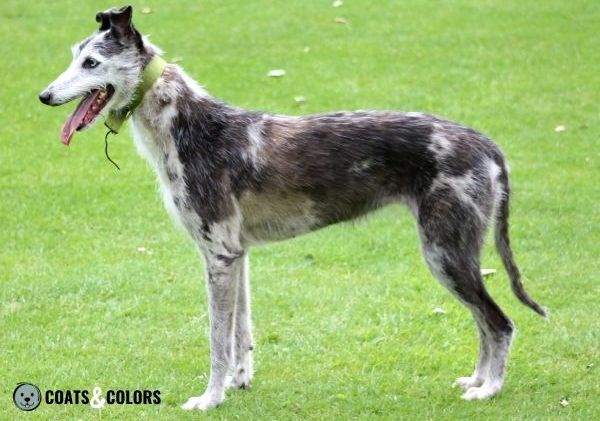
Sighthound Domino & Dominant Black (KB/- eG/-)
A dominant black KB variant would normally inhibit A locus expression and cause a solid dark coat. But eG/- can somehow still cause residual expression of the A locus.
On a KB domino dog who is genotypically tan point (KB/- eG/- at/-), this often causes a shaded grizzle phenotype with a dark overlay on the top and a lighter underside.
And a combination of KB domino and sable (KB/- eG/- Ay/-) causes an overall grayish coat sometimes called chinchilla, bronze, blue domino, blue grizzle, or simply gray.
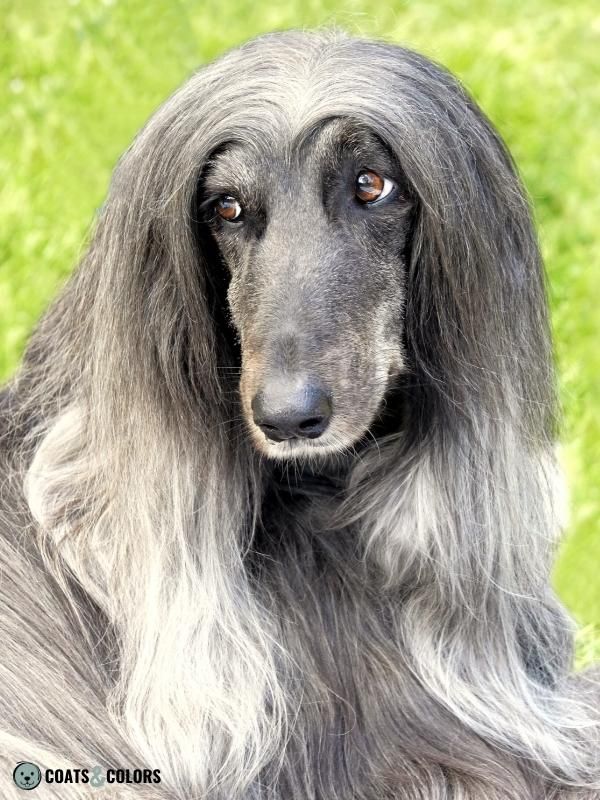

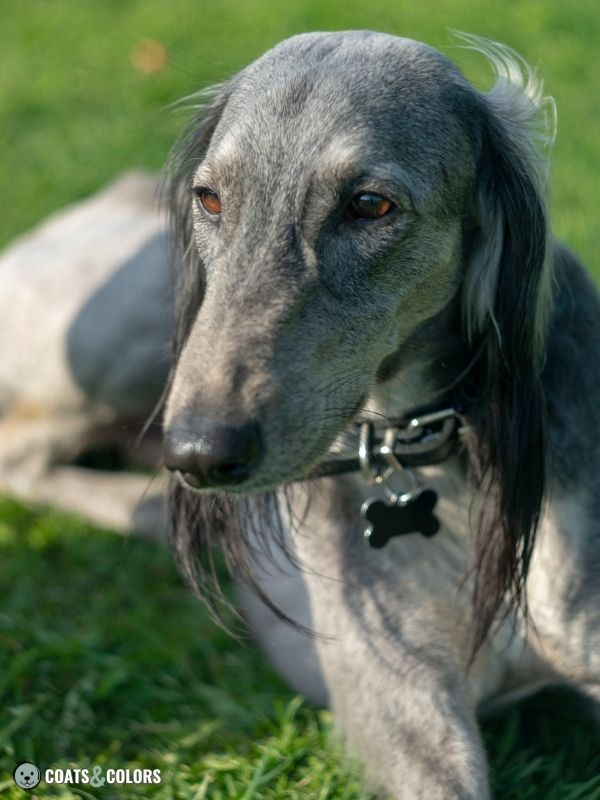
Sighthound Domino & Brindle (kbr/- eG/-)
Brindle adds dark stripes of eumelanin on top of areas with phaeomelanin.
But on a sable brindle domino dog (kbr/- Ay/- eG/-), the striping is often very reduced. Stzriping can vanish from the muzzle or legs. And the remaining stripes will sometimes fade to some pale gray smudges.
On tan point brindle domino (kbr/- at/- eG/-), the black coat on the back can fade to express some phaeomelanin. This can make faint brindle striping visible on these dog’s back and flanks. Simultaneously, eG often deletes striping from the traditional face and leg tan markings!
Sighthound Domino & Sable (ky/ky eG/- Ay/-)
Grizzle removes eumelanin, so it can remove dark shading from a sable coat.
In combination with lighter phaeomelanin and pale undercoat, this can add up to create a very light and purely cream or yellow coat. Affected golden domino or cream domino dogs are sometimes called newsprint cream and can hardly be distinguished from recessive red dogs.
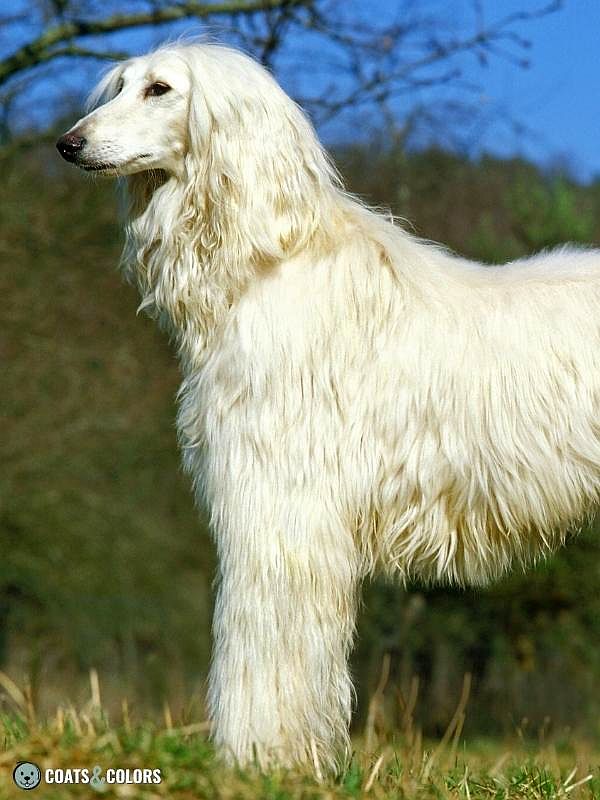
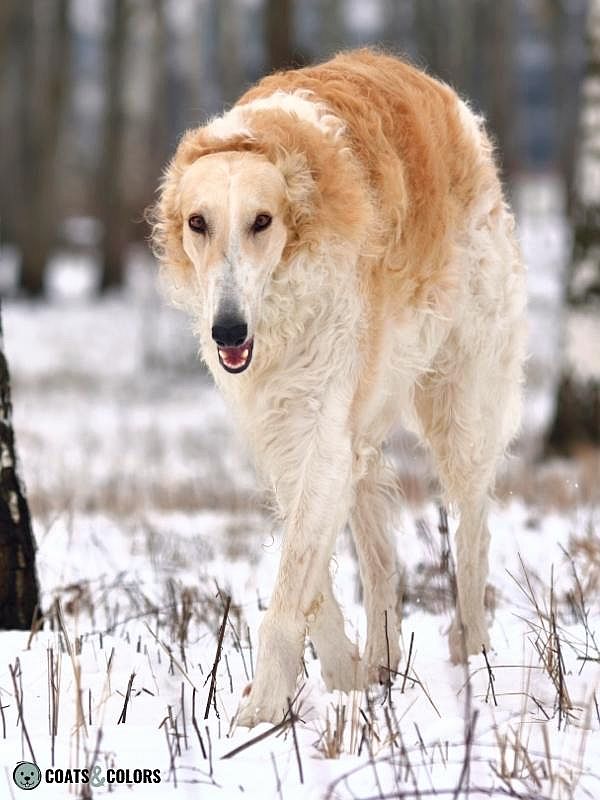
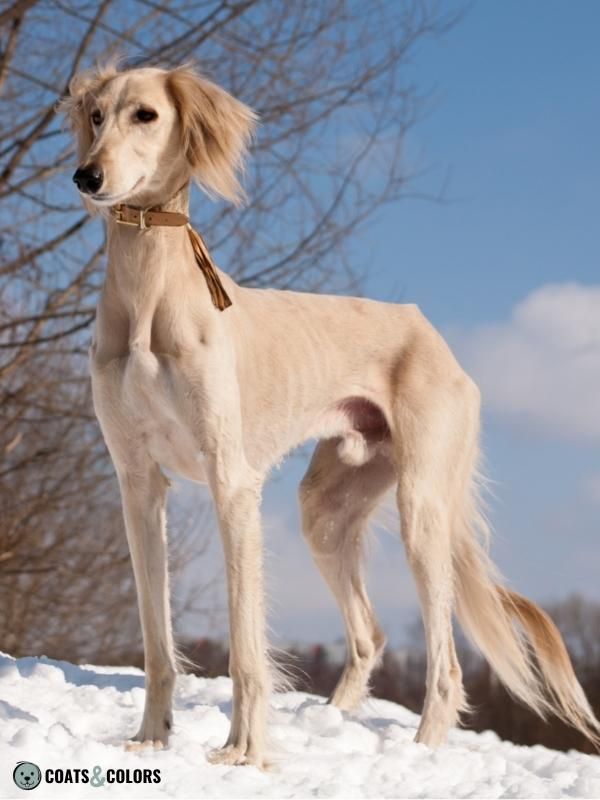
Sighthound Domino & Agouti (ky/ky eG/- aw/-)
Not many sighthounds come in agouti.
While Northern domino is often combined with aw, in sighthounds this is a rather rare combination. Some of the few breeds that I can think of with agouti grizzle are Chart Polski or Taigan.
It often causes a widow’s peak and a grizzled phenotype with reduced dark hair banding, which can mimic shaded sable. Some of these dogs have light facial markings with some residual black banding under the eyes. Dogs can also sometimes have a darker nose bar between forehead and nose leather.
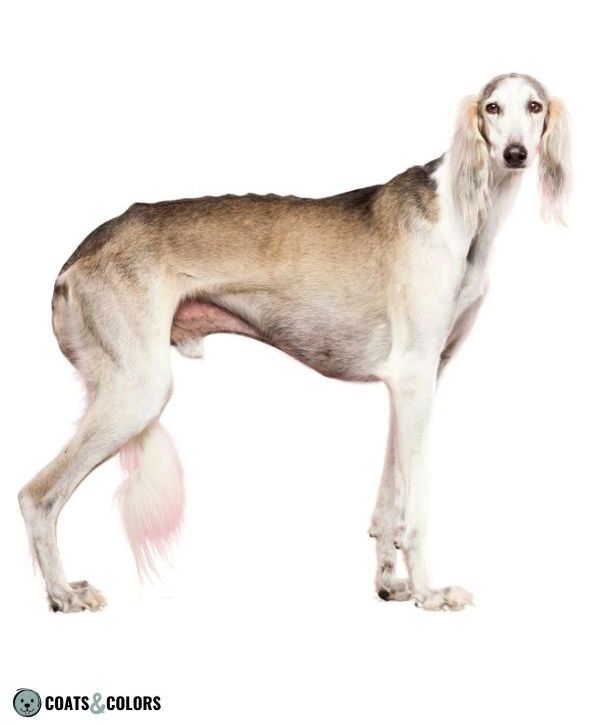
Sighthound Domino & Saddle (ky/ky eG/- asa/-)
In dogs with a saddle pattern, the dark saddle can get very small or even be reduced to only some darker hairs on the back of the dog. Not many sighthounds have saddles, so this is rare.
Sighthound Domino & Tan Points (ky/ky eG/- at/-)
This is one of the most common grizzle domino phenotypes. Typically, it is expressed as a pale face with a widow’s peak or residual dark nose bar. Affected dogs often have a pale red intensity.
A tan point pattern with grizzle will cause lighter and bigger tan points and create large pale “open” face markings. This is characteristic of the tan point grizzle phenotype.
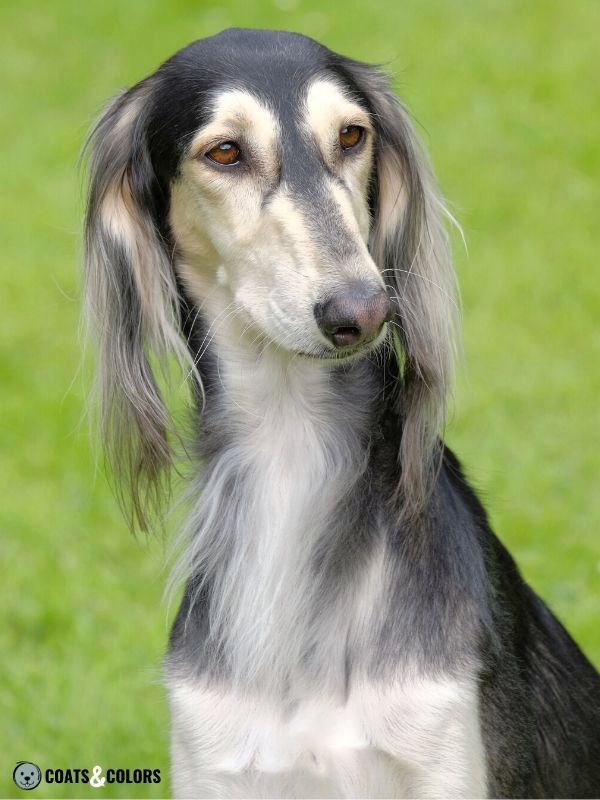
This pattern can sometimes remove lots of eumelanin from the back and resemble shaded sable. In some dogs, this phenotype is even called silver sable, golden sable, etc.
But most dogs stay quite dark with only some lighter undercoat and light hair roots. In most dogs, pointed grizzle creates a very shaded look with a dark overlay on paler than average phaeomelanin.
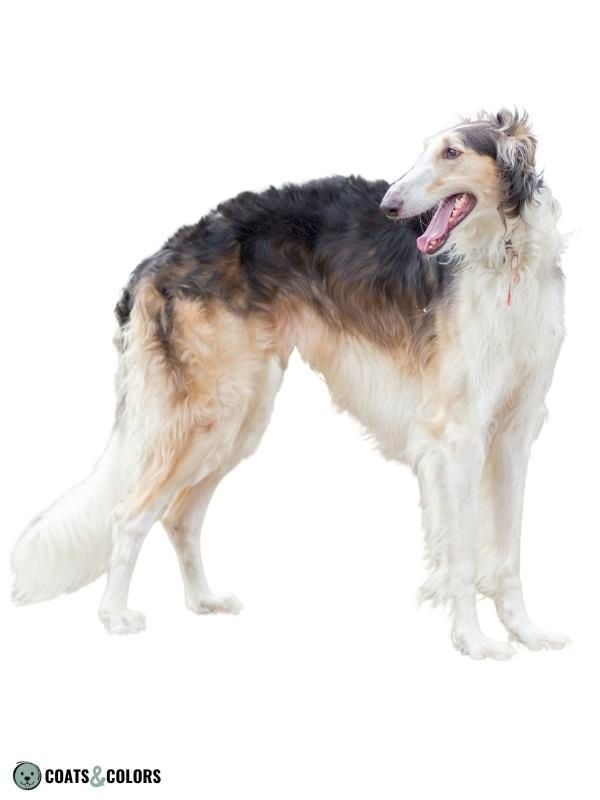
There are many different names for different patterns of this type.
Depending on the background color, different color combinations are called ivory grizzle, cream grizzle, silver grizzle, yellow grizzle or cream domino, golden domino, cream domino, silver domino, etc.
But in some dogs, phaeomelanin will not fade to cream or yellow. Grizzle with normal reddish phaeomelanin expression is sometimes called red domino, red grizzle, or deer grizzle.
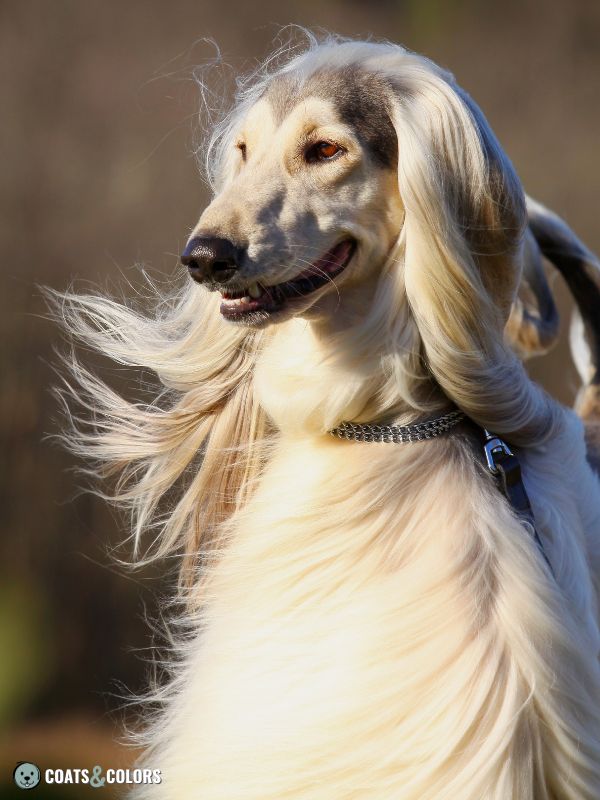
Breeds with eG
Grizzle domino is common in some closely related sighthound breeds. It was also confirmed in some other dog breeds that mostly originate from Asia or the Middle East[2]:
- Afghan Hound
- Borzoi
- Chart Polski
- Saluki
- Taigan
- Tazy
- Hortaya Borzaya
- Silken Windhound
- Silken Windsprite
- Xigou
- Caravan Hound
- Anatolian Shepherd Dog
- Tibetan Mastiff
- Canaan Dog
- Central Asian Shepherd Dog
- Kritikos Lagonikos
In some other breeds, the eG variant occurs at a very low frequency. So dogs actually expressing a domino pattern should be very rare[2]. But it shows how much this allele got around, eh?
- Akita
- American Foxhound
- Black Russian Terrier
- Caucasian Shepherd Dog
- Dachshund
- Greyhound
- Large Munsterlander
- Maltese
- Manchester Terrier
- Mi-ki
- Norwegian Buhund
- Norwegian Lundehund
- Pembroke Welsh Corgi
- Pomeranian
- Poodle
- Puli
- Tibetan Mastiff
- Treeing Walker Coonhound
- Yorkshire Terrier
Learn More
Links
[1] Dayna L. Dreger, Sheila M. Schmutz. A New Mutation in MC1R Explains a Coat Color Phenotype in 2 “Old” Breeds: Saluki and Afghan Hound. Journal of Heredity, Volume 101, Issue 5, September-October 2010, Pages 644–649. https://doi.org/10.1093/jhered/esq061
[2] Dreger DL, Hooser BN, Hughes AM, Ganesan B, Donner J, Anderson H, et al. (2019). True Colors: Commercially-acquired morphological genotypes reveal hidden allele variation among dog breeds, informing both trait ancestry and breed potential. PLoS ONE 14(10): e0223995. https://doi.org/10.1371/journal.pone.0223995
[3] Anderson, H., Honkanen, L., Ruotanen, P. et al. Comprehensive genetic testing combined with citizen science reveals a recently characterized ancient MC1R mutation associated with partial recessive red phenotypes in dog. Canine Genet Epidemiol 7, 16 (2020). https://doi.org/10.1186/s40575-020-00095-7
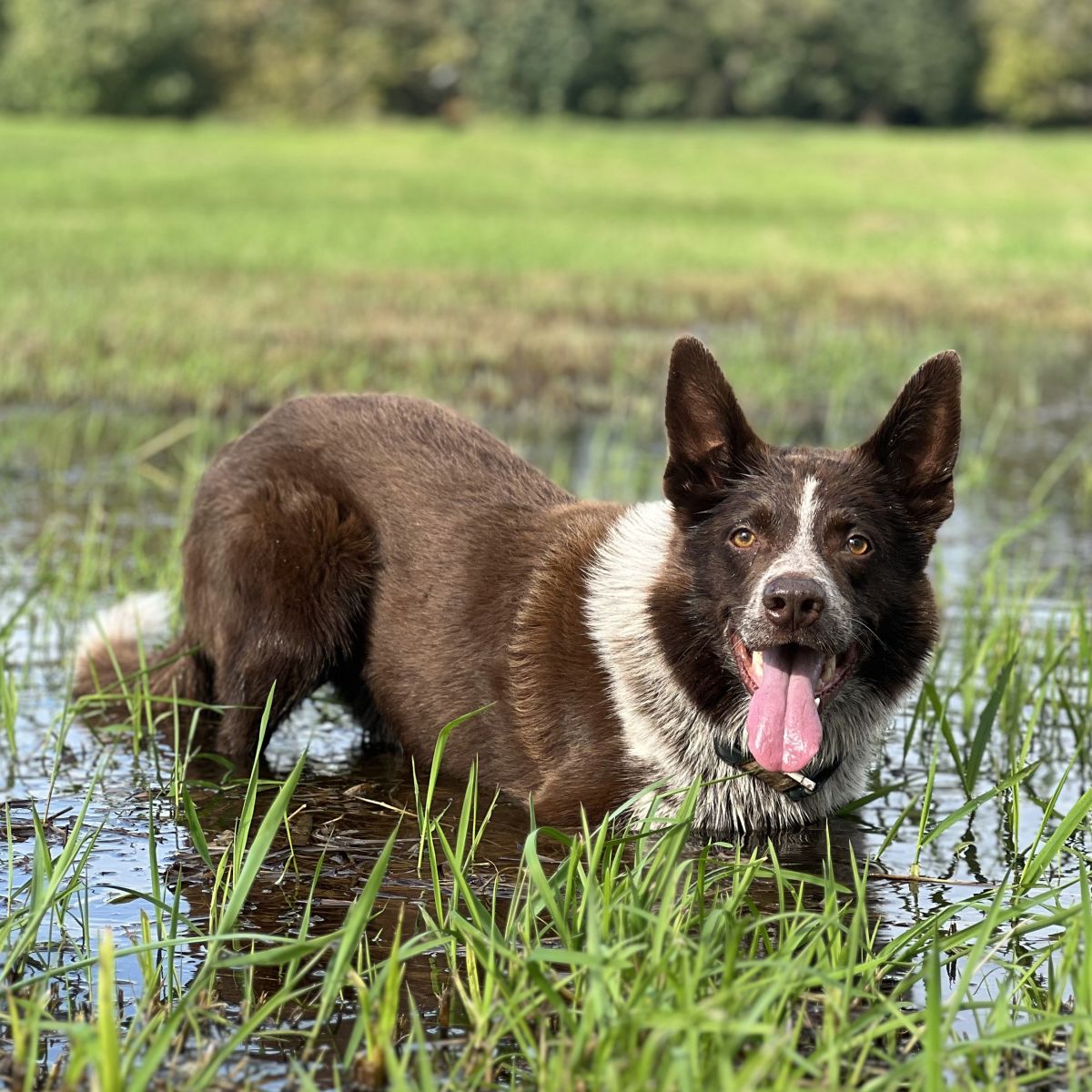
Hi! I’m Steffi. I am a biologist and a big time dog nerd. You are curious about coat color genetics? You’ve come to the right place! Read more.

